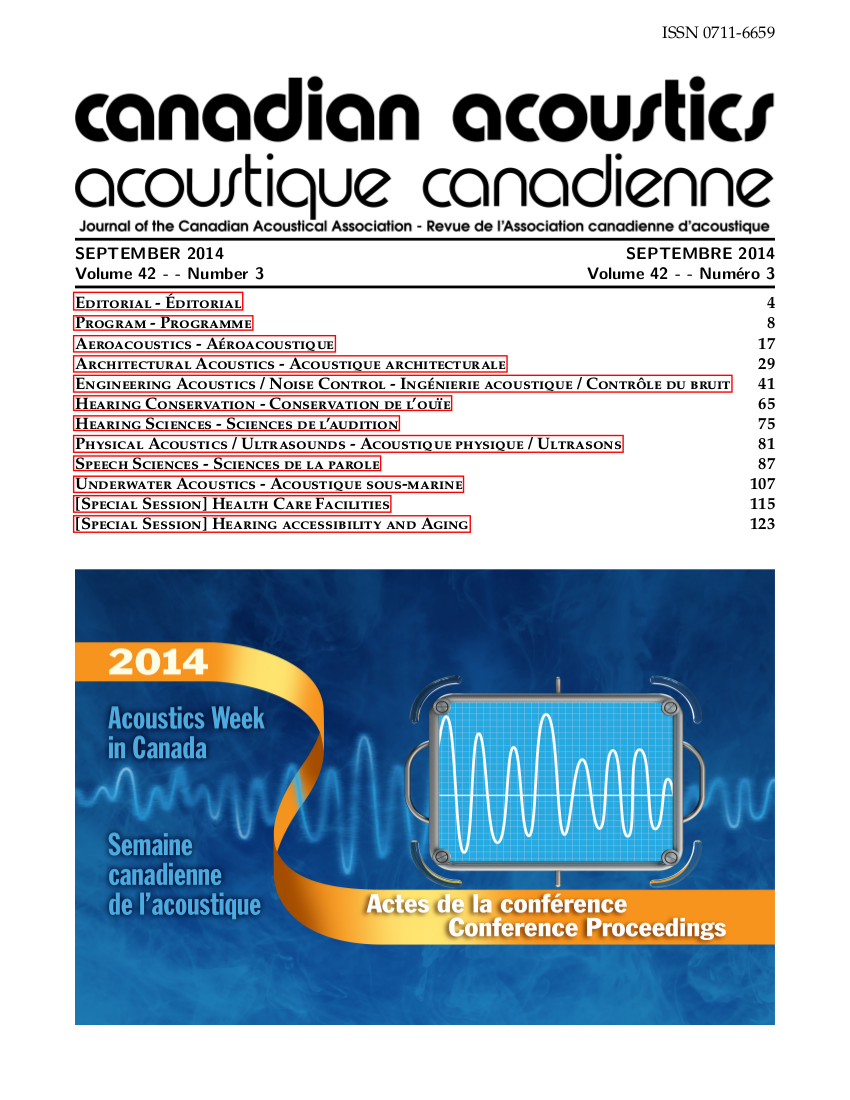The effect of high frequency vortex generator on the acoustic resonance excitation in shallow rectangular cavities
Abstract
The flow-excited acoustic resonance in shallow rectangular cavities can be a source of severe noise and/or excessive vibration. This phenomenon is excited when one of the acoustic modes in the accommodating enclosure is coupled with the flow instabilities resulting from the shear layer formation at the cavity mouth. In this study the effect of placing a high frequency vortex generator (control cylinder) in vicinity of the upstream edge of the cavity on the acoustic resonance excitation is experimentally and numerically investigated. The effectiveness of the passive method is studied by investigating different cylinder diameters and locations on both horizontal and vertical directions. The study included two cavities with different aspect ratios (L/D=1.0 and L/D=1.67, L: cavity length, D: cavity depth) to address the effectiveness of the method with respect to the cavity depth. The method is investigated in flow with Mach number up to 0.45 and found to be effective in suppressing the acoustic resonance excitation. All the different configurations investigated are compared to the base case which is the bare cavity with no cylinder attached. It is observed that using the optimum cylinder location and diameter can be very effective and able to keep the acoustic pressure below 140 Pa, compared to the base case with values exceeding 2000 Pa. To further understand the interaction between the cylinder vortex shedding and the shear layer at the cavity mouth and the influence on the shear layer thickness, a 2D numerical simulation using a detached eddy simulation models has been carried out and compared to the experimental results.Published
How to Cite
Issue
Section
License
Author Licensing Addendum
This Licensing Addendum ("Addendum") is entered into between the undersigned Author(s) and Canadian Acoustics journal published by the Canadian Acoustical Association (hereinafter referred to as the "Publisher"). The Author(s) and the Publisher agree as follows:
-
Retained Rights: The Author(s) retain(s) the following rights:
- The right to reproduce, distribute, and publicly display the Work on the Author's personal website or the website of the Author's institution.
- The right to use the Work in the Author's teaching activities and presentations.
- The right to include the Work in a compilation for the Author's personal use, not for sale.
-
Grant of License: The Author(s) grant(s) to the Publisher a worldwide exclusive license to publish, reproduce, distribute, and display the Work in Canadian Acoustics and any other formats and media deemed appropriate by the Publisher.
-
Attribution: The Publisher agrees to include proper attribution to the Author(s) in all publications and reproductions of the Work.
-
No Conflict: This Addendum is intended to be in harmony with, and not in conflict with, the terms and conditions of the original agreement entered into between the Author(s) and the Publisher.
-
Copyright Clause: Copyright on articles is held by the Author(s). The corresponding Author has the right to grant on behalf of all Authors and does grant on behalf of all Authors, a worldwide exclusive license to the Publisher and its licensees in perpetuity, in all forms, formats, and media (whether known now or created in the future), including but not limited to the rights to publish, reproduce, distribute, display, store, translate, create adaptations, reprints, include within collections, and create summaries, extracts, and/or abstracts of the Contribution.


